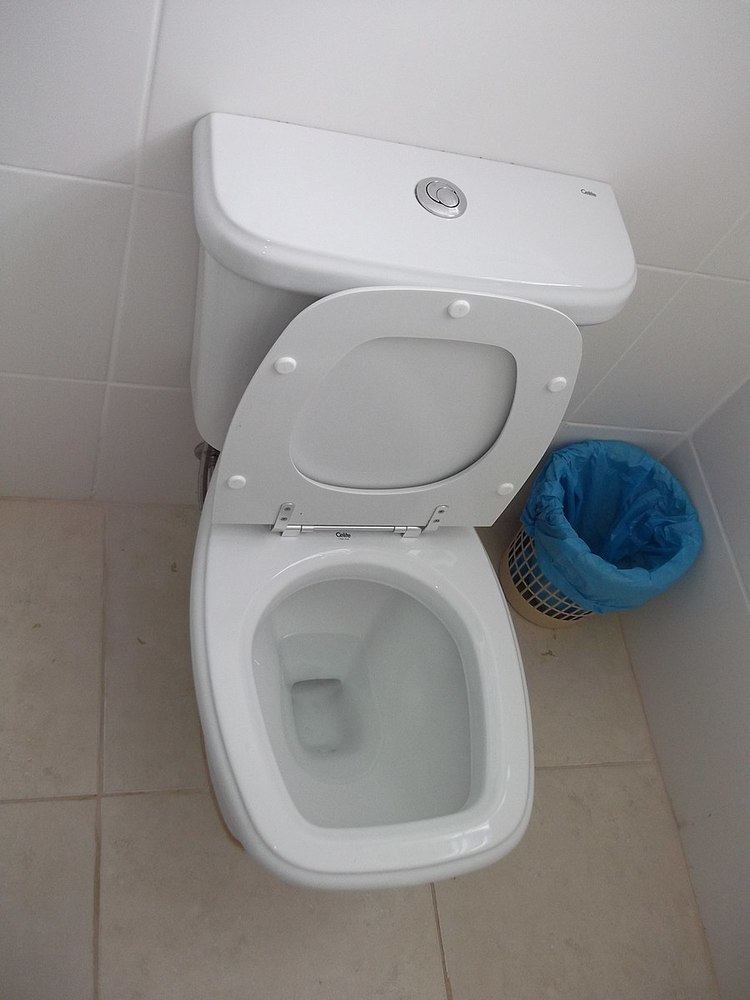 | ||
A dual-flush toilet is a variation of the flush toilet that uses two buttons or handles to flush different levels of water.
Contents
It was proposed by American industrial designer Victor Papanek in his 1976 book Design for the real world, but the first practical implementation was designed in 1980, by staff at Caroma. Although the first generation dual-flush toilet caught on, a redesign in 1993 cut water usage in half when used properly. The dual-flush toilet has since become almost universally adopted in Australia, New Zealand, Singapore, and Israel, with its use in new buildings often mandated by legislation in those countries. However, due to the more complex mechanism, it is more expensive than many other types of low-flush toilets.
Mechanism
As it is a development of the traditional Australian flush toilet, the dual-flush toilet differs from siphon-flush toilets in that it relies on gravity to remove waste from the toilet. In addition to its dual flush feature, the lack of siphoning also results in it requiring less water to operate. The lack of siphoning also means that it is similar to an aeroplane toilet; the water line is considerably lower than that of siphon-flush toilets. The main feature of the toilet is that it has two buttons for releasing water. It outputs water in both 3 litre and 6 litre capacities. The smaller level is designed for liquid waste, and the larger is designed for solid waste. It also uses a larger 10 cm trapway in the bowl, allowing for water to come out faster and clear the bowl efficiently.
Advantages
The dual flush toilet, due to its ability to save water, has been promoted by the Australian Government under its "Target 155" campaign. Dual flush toilets started out with a 9/4.5 L (full/half) flush, however, innovations from the Australian company Caroma have brought that down to 4.5/3 L flush, achieving a WELS rating of 4 and 5 stars in Australia.
Australian governments have been encouraging the replacement of old single flush toilets with more water efficient toilets through toilet rebates. For dual flush toilets, with a star rating of 4 or higher, owners may be able to qualify to claim a rebate from the State Government in Victoria, New South Wales, or South Australia. Sydney Water’s rebate program ended on 30 June 2011.
Disadvantages
As with most design changes, improvements are often a tradeoff with other factors. In this case, while the toilet achieves its goal of saving water, it may cost somewhat more than a single-flush toilet. If retrofitting an existing toilet, there is the additional cost of the building modifications; however certain retrofitting systems have brought the price down significantly, costing about US$30.
The low water level in a dual-flush toilet may be slightly off-putting to visitors to Australia from countries where toilets with a full tank and one lever/button are the norm.
